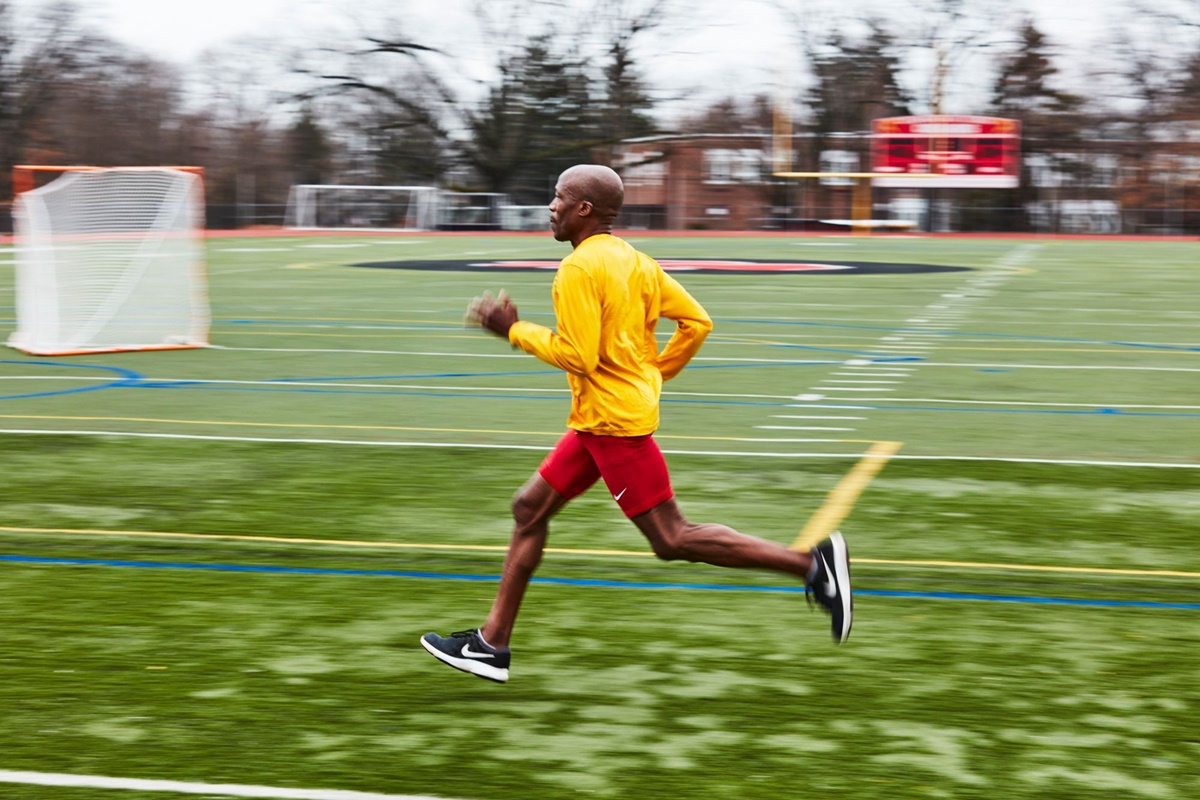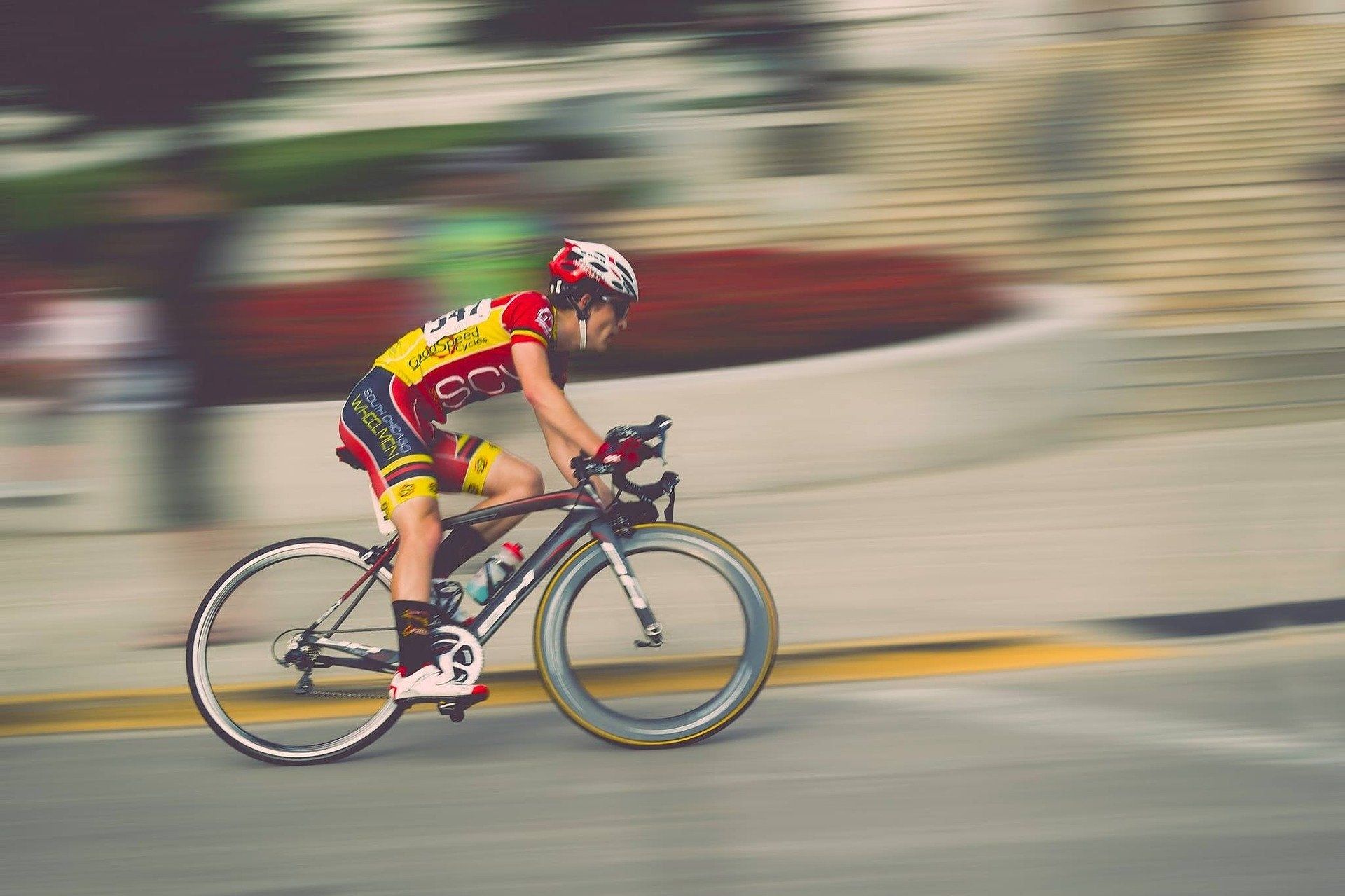

Featured
How To Build Anaerobic Endurance
Modified: January 22, 2024
Learn how to build anaerobic endurance with our featured guide. Maximize your stamina and power for high-intensity workouts.
Introduction
Welcome to our comprehensive guide on how to build anaerobic endurance. Whether you’re an athlete looking to improve your performance or simply someone who wants to enhance your overall fitness level, anaerobic endurance is a key component to focus on. In this article, we will explore what anaerobic endurance is, why it is important, and provide you with a structured plan to develop and enhance this vital aspect of your fitness.
So, what exactly is anaerobic endurance? Anaerobic endurance refers to your body’s ability to perform intense physical activities in the absence of oxygen, typically for short periods of time. This form of endurance relies primarily on the energy stored in your muscles, enabling you to generate explosive power and perform high-intensity movements.
Why is it important to develop anaerobic endurance? Well, whether you’re engaged in team sports like basketball or soccer, participating in high-intensity interval training, or even just sprinting to catch a bus, having a well-developed anaerobic system can make a significant difference. It allows you to sustain high-intensity efforts, recover faster between bursts of activity, and ultimately improve your overall performance.
In the following sections, we will delve deeper into the various aspects of building anaerobic endurance. We will discuss the essential exercises that target anaerobic capacity, the importance of interval training, strength training techniques to enhance endurance, tips for proper recovery and rest, the role of nutrition in fueling your workouts, and how to monitor your progress. By the end of this article, you will have a clear understanding of the strategies and techniques required to build anaerobic endurance effectively.
So, let’s dive in and discover the secrets to improving your anaerobic endurance!
Understanding Anaerobic Endurance
Before we jump into the practical aspects of building anaerobic endurance, it’s important to develop a solid understanding of what it entails. Anaerobic endurance is the ability of your body to sustain high-intensity physical activity for shorter durations without relying on oxygen as the primary energy source.
During anaerobic exercise, your body’s demand for energy exceeds the oxygen supply available. As a result, your muscles rely on stored glycogen, a form of glucose, to generate the necessary energy. This process leads to the production of lactic acid, which can cause fatigue and muscle soreness.
Understanding the physiological factors at play during anaerobic exercise is crucial. Your anaerobic capacity is determined by the efficiency of your energy systems, the strength and endurance of your muscles, and your ability to tolerate and clear lactic acid buildup.
There are two primary energy systems involved in anaerobic endurance: the phosphocreatine system and the anaerobic glycolytic system. The phosphocreatine system provides immediate energy for short bursts of intense activity, such as sprinting or weightlifting. The anaerobic glycolytic system, on the other hand, utilizes glycogen to produce energy over a slightly longer duration, typically lasting up to two minutes.
To improve your anaerobic endurance, it’s essential to train both of these energy systems. By doing so, you can increase the efficiency of your muscles in utilizing stored glycogen and improve your ability to tolerate and effectively clear lactic acid.
Developing a strong anaerobic endurance capacity has numerous benefits. First and foremost, it allows you to perform high-intensity activities more effectively and for longer durations. This is particularly valuable in sports that require short bursts of explosive power, such as sprinting, weightlifting, and martial arts.
In addition to improving performance in specific activities, building anaerobic endurance can also enhance your overall fitness level. By challenging your muscles and energy systems through high-intensity exercise, you stimulate adaptations that lead to increased strength, power, and stamina.
Now that we’ve covered the fundamentals of anaerobic endurance, let’s move on to the practical aspects of training and building this crucial component of fitness.
The Importance of Anaerobic Training
When it comes to improving your overall fitness and athletic performance, incorporating anaerobic training into your exercise regimen is essential. While aerobic exercise, such as running or cycling, focuses on developing cardiovascular endurance, anaerobic training targets the different energy systems and muscular adaptations required for high-intensity activities.
One of the key benefits of anaerobic training is its ability to improve your body’s ability to produce and utilize energy during intense bursts of activity. By engaging in activities that challenge your anaerobic energy systems, you can increase your body’s capacity to generate power and sustain high-intensity efforts for longer durations.
Additionally, anaerobic training has been shown to have a positive impact on body composition. High-intensity exercise, such as resistance training and interval training, can promote muscle growth and fat loss. This is because these activities require more energy expenditure both during and after the workout, leading to a higher metabolic rate and improved fat oxidation.
Another advantage of anaerobic training is its ability to improve bone density and strength. Activities like weightlifting and plyometric exercises put stress on the skeletal system, stimulating bone remodeling and helping to prevent conditions like osteoporosis.
Incorporating anaerobic training into your exercise routine can also enhance your overall performance in various sports and physical activities. Whether you’re an athlete participating in team sports, a recreational runner aiming to improve your race times, or an individual looking to excel in functional fitness, developing anaerobic endurance and power is vital.
In addition to the physical benefits, anaerobic training can also have a positive impact on mental health. High-intensity exercise releases endorphins, which can improve mood and reduce symptoms of stress and anxiety. The challenge and intensity of anaerobic workouts can also boost self-confidence and mental resilience.
Ultimately, the importance of anaerobic training lies in its ability to take your fitness and performance to the next level. By challenging your body with high-intensity exercises and targeting the anaerobic energy systems, you can build strength, power, and endurance that will translate into improved performance and overall well-being.
Planning Your Anaerobic Endurance Workouts
When it comes to building anaerobic endurance, having a well-structured workout plan is essential. Proper planning ensures that you target the right energy systems, progressively overload your muscles, and allow for adequate recovery. Here are some key factors to consider when planning your anaerobic endurance workouts:
Set Clear Goals:
Start by defining your specific goals for anaerobic endurance. Whether you want to improve your sprinting speed, increase your weightlifting capacity, or enhance your performance in a particular sport, setting clear and measurable goals will help you stay focused and motivated.
Choose Appropriate Exercises:
Select exercises that target the anaerobic energy systems and mimic the movements involved in your desired activity. For example, if you’re a sprinter, incorporate explosive movements like sprint intervals and plyometric exercises. If you’re a weightlifter, focus on compound lifts such as squats, deadlifts, and bench presses.
Structure your Workouts:
Divide your workouts into different phases to progressively challenge your body and avoid plateauing. This can include a strength-building phase where you focus on heavier weights and lower repetitions, followed by a power phase with explosive exercises and shorter rest intervals. Incorporate interval training to improve your anaerobic capacity.
Gradually Increase Intensity:
Progressively overload your muscles and energy systems by gradually increasing the intensity of your workouts. This can be done by either increasing the weight you lift, the duration or intensity of your intervals, or reducing the rest time between sets or intervals. Aim to push yourself beyond your comfort zone while maintaining proper form.
Include Adequate Recovery:
Allow for sufficient rest and recovery between workouts to avoid overtraining and injury. Adequate sleep, proper nutrition, and active recovery techniques like foam rolling and stretching are crucial for optimizing recovery and enhancing performance.
Track Your Progress:
Keep a record of your workouts, including sets, reps, weights, and rest intervals. This will help you track your progress over time and identify areas for improvement. Consider using a fitness tracking app or journal to make tracking easier and more convenient.
Remember, consistency is key when it comes to building anaerobic endurance. Stick to your workout plan, stay committed to your goals, and celebrate your accomplishments along the way. With proper planning and dedication, you can achieve significant improvements in your anaerobic endurance and overall performance.
Essential Exercises for Building Anaerobic Endurance
To effectively build anaerobic endurance, it’s important to include a variety of exercises that target your anaerobic energy systems and challenge your muscles. Here are some essential exercises that should be incorporated into your anaerobic endurance training regimen:
1. Sprint Intervals:
Sprinting is one of the most effective exercises for building anaerobic endurance. It simulates the short bursts of intense activity that require rapid energy production. Incorporate sprint intervals into your workouts by alternating between sprints and periods of rest or active recovery. Start with shorter distances and gradually increase the duration and intensity as your endurance improves.
2. High-Intensity Interval Training (HIIT):
HIIT involves alternating between short bursts of high-intensity exercise and periods of active recovery or rest. This form of training boosts your heart rate and challenges your anaerobic energy systems. Some effective HIIT exercises include burpees, mountain climbers, kettlebell swings, and jump squats. Customize your workouts by selecting exercises that target multiple muscle groups and mimic the movements of your desired activity.
3. Plyometric Exercises:
Plyometric exercises involve explosive movements that enhance power and speed. These exercises require rapid and forceful muscle contractions, improving your ability to generate power in a short amount of time. Examples of plyometric exercises include box jumps, explosive push-ups, jump lunges, and medicine ball slams.
4. Resistance Training:
Strength training exercises are an important component of building anaerobic endurance. By challenging your muscles with heavy weights, you stimulate muscle growth and improve muscular endurance. Compound exercises like squats, deadlifts, lunges, and bench presses are particularly effective in targeting multiple muscle groups and building overall strength and power.
5. Circuit Training:
Circuit training involves performing a series of exercises one after another with minimal rest in between. This form of training not only boosts your cardiovascular endurance but also challenges your anaerobic energy systems. Create a circuit by combining resistance training exercises, bodyweight movements, and cardiovascular exercises. Aim for high intensity and choose exercises that target different muscle groups.
6. Sports-Specific Drills:
If you have a specific sport or activity that requires anaerobic endurance, incorporate drills that mimic the movements and demands of that sport. For example, if you’re a basketball player, include court sprints, dribbling drills, and explosive jump exercises. If you’re a martial artist, focus on rapid combinations, agility drills, and quick kicks.
Remember to warm up adequately before each session, maintain proper form throughout the exercises, and listen to your body to avoid injury. Gradually increase the intensity and duration of your workouts to continually challenge your anaerobic endurance and drive progress.
By including these essential exercises in your anaerobic endurance training routine, you can improve your power, speed, and overall performance in high-intensity activities.
Interval Training for Anaerobic Endurance
Interval training is a highly effective method for improving anaerobic endurance. By alternating between periods of intense exercise and active recovery, interval training pushes your anaerobic energy systems to their limits, allowing you to sustain high-intensity efforts for longer durations. Here’s how you can incorporate interval training into your anaerobic endurance workouts:
1. Set Intervals:
In interval training, you work at a high intensity for a set period of time, followed by a designated rest or recovery interval. The length and intensity of the intervals can vary based on your fitness level and specific goals. Start with shorter intervals, such as 30 seconds of all-out effort followed by 60 seconds of rest, and gradually increase the duration and intensity as you progress.
2. Tabata Protocol:
The Tabata protocol is a popular form of interval training that follows a specific time structure. It involves performing 20 seconds of intense exercise followed by 10 seconds of rest, repeated for eight rounds (a total of four minutes). This high-intensity format challenges your anaerobic energy systems and helps improve both power and endurance.
3. Fartlek Training:
Fartlek, a Swedish word meaning “speed play,” is a less structured form of interval training. During a fartlek session, you vary the intensity and duration of your efforts based on your surroundings and personal preference. For example, while running, you can choose to sprint between lampposts and jog or walk between trees. Fartlek training is a fun and dynamic way to incorporate intervals into your workouts.
4. Pyramid Intervals:
Pyramid intervals involve progressively increasing and then decreasing the intensity or duration of your intervals. For example, you can start with shorter intervals, gradually increase the length of each interval until reaching a peak, and then decrease them back down. This variation challenges different energy systems and helps build both speed and endurance.
5. Hill Sprints:
Incorporating hill sprints into your interval training routine adds an extra challenge and resistance. Find a hill or incline and sprint up it at maximum effort, then walk or jog back down for recovery. Hill sprints not only improve anaerobic endurance but also enhance power, strength, and leg muscles.
6. Ins and Outs:
Ins and outs are a type of interval training where you alternate between faster and slower segments within one interval. For example, during a running interval, you might sprint for the first 20 seconds, then jog for the next 10 seconds, and repeat this pattern multiple times. Ins and outs challenge your body to transition between different energy systems while maintaining overall speed and intensity.
Remember to warm up thoroughly before starting your interval training sessions and gradually progress in terms of intensity, duration, and frequency. Be mindful of your form and listen to your body to avoid overexertion and injury.
Interval training is an effective way to develop anaerobic endurance, increase your lactate threshold, and improve your overall performance in high-intensity activities. Incorporate these interval training methods into your workouts to take your anaerobic endurance to new heights.
Strength Training for Anaerobic Endurance
Strength training is a crucial component of building anaerobic endurance. By incorporating resistance exercises into your workouts, you can develop the muscular strength and power necessary for sustained high-intensity efforts. Here’s how you can optimize your strength training to enhance your anaerobic endurance:
Compound Exercises:
Focus on compound exercises that target multiple muscle groups simultaneously. Squats, deadlifts, lunges, bench presses, and overhead presses are examples of compound exercises that engage large muscle groups and require a significant amount of energy. These exercises build overall strength, improve muscular endurance, and enhance your ability to perform high-intensity activities.
Progressive Overload:
To effectively build anaerobic endurance, it’s important to progressively overload your muscles. Gradually increase the weight you lift or the resistance you use over time. This progressive challenge stimulates muscle growth and improves your muscles’ ability to produce and sustain high-intensity efforts. Aim to perform exercises at a weight or resistance that allows you to complete 8-12 repetitions with proper form before reaching muscle fatigue.
Short Rest Periods:
During your strength training sessions, keep the rest periods relatively short. This approach helps to maintain an elevated heart rate, mimicking the demands of high-intensity activities. Aim for rest periods of 30 to 60 seconds between sets to challenge your anaerobic energy systems and improve your endurance.
Supersets and Circuits:
Incorporate supersets or circuit training into your strength workouts to further enhance anaerobic endurance. Instead of resting between sets, alternate between different exercises targeting different muscle groups. This not only increases the intensity of your workout but also challenges your cardiovascular system and helps build endurance.
Explosive Movements:
Include explosive movements in your strength training routine to improve power and speed. Exercises like box jumps, medicine ball slams, kettlebell swings, and plyometric push-ups require rapid and forceful muscle contractions. These movements activate fast-twitch muscle fibers, enhancing your ability to generate power during high-intensity efforts.
Functional Movements:
Incorporate functional movements that closely mimic the actions performed during your desired activity or sport. By targeting specific movement patterns, you can improve the efficiency and endurance of the muscles involved. For example, if you’re a runner, include exercises like single-leg squats and lunges to strengthen the muscles used in running mechanics.
Remember to prioritize proper form and technique during your strength training workouts to minimize the risk of injury. Gradually increase the intensity and volume of your sessions over time as your strength and endurance improve.
By incorporating these key principles into your strength training routines, you can build the muscular strength and power necessary for improved anaerobic endurance. These workouts will not only enhance your athletic performance but also contribute to overall functional fitness and longevity.
Recovery and Rest for Anaerobic Endurance
Recovery and rest play a crucial role in building anaerobic endurance. While challenging your body with high-intensity exercises is important, it is during the recovery phase that your muscles repair and adapt, allowing you to continuously improve your performance. Here are some key principles to follow for effective recovery and rest:
1. Adequate Sleep:
Quality sleep is essential for optimal recovery. Aim for 7-9 hours of uninterrupted sleep each night to ensure your body has enough time to repair and recharge. During sleep, your body releases growth hormone, which aids in muscle recovery and repair.
2. Active Recovery:
Engage in light exercise or active recovery on your rest days. Activities like walking, swimming, yoga, or gentle stretching can improve blood flow, alleviate muscle soreness, and enhance recovery. Active recovery helps reduce stiffness and prevents muscles from becoming stagnant.
3. Proper Nutrition:
Ensure you are fueling your body with a balanced diet that includes an adequate amount of protein, carbohydrates, and healthy fats. Protein is crucial for muscle repair and growth, while carbohydrates provide energy for your workouts. Include plenty of fruits, vegetables, and whole foods to support your overall health and recovery process.
4. Hydration:
Stay hydrated throughout the day to support muscle function, prevent fatigue, and enhance recovery. Water helps flush out toxins from your system and aids in muscle repair and regeneration. Aim to drink at least 8-10 glasses of water per day, more during intense workouts or hot weather.
5. Foam Rolling and Stretching:
Incorporate foam rolling, stretching, and mobility exercises into your routine to reduce muscle tension and enhance flexibility. Foam rolling helps break up knots or trigger points in the muscles, improving blood flow and accelerating recovery. Stretching can increase range of motion, reduce muscle stiffness, and prevent injuries.
6. Listen to Your Body:
Pay attention to how your body feels and adjust your training accordingly. If you are feeling excessively fatigued or experiencing pain, it may be a sign that you need to take a rest day or decrease the intensity of your workouts. Pushing through excessive fatigue or ignoring pain can lead to overtraining and injury.
Remember, recovery is a crucial part of the training process. It is during rest and recovery that your body adapts to the demands of high-intensity exercise, making you stronger and more resilient. Prioritize recovery just as much as you prioritize your workouts to optimize your anaerobic endurance and overall performance.
Nutrition for Anaerobic Endurance
Proper nutrition plays a vital role in building anaerobic endurance. Fueling your body with the right nutrients before, during, and after your workouts can optimize your performance, support muscle recovery, and enhance overall endurance. Here are some key nutrition considerations for anaerobic endurance:
1. Pre-Workout Fuel:
Before your workouts, consume a balanced meal or snack that includes both carbohydrates and protein. Carbohydrates provide the necessary fuel for high-intensity exercise, while protein helps with muscle repair and recovery. Opt for easily digestible foods such as fruits, yogurt, oatmeal, or a protein shake to provide quick energy.
2. Hydration:
Staying properly hydrated is crucial for optimal athletic performance. Drink water throughout the day to maintain hydration levels, and consume fluids before, during, and after your workouts. During intense exercise, consider electrolyte replacements to replenish minerals lost through sweat.
3. During Workout Nutrition:
If your workouts exceed one hour in duration, it may be beneficial to consume carbohydrates during your training. This can be in the form of a sports drink, energy gels, or easily digestible foods like bananas or energy bars. Consuming carbohydrates during prolonged exercise can help maintain blood sugar levels and delay fatigue.
4. Post-Workout Recovery:
After your workouts, prioritize recovery by consuming a combination of carbohydrates and protein. Carbohydrates replenish glycogen stores, while protein helps repair and rebuild muscle tissue. Lean protein sources like chicken, fish, eggs, or plant-based options along with complex carbohydrates like whole grains, sweet potatoes, or quinoa are ideal choices for recovery meals.
5. Balanced Diet:
Aim for a well-rounded, balanced diet that includes a variety of whole foods. Include lean proteins, complex carbohydrates, healthy fats, and an abundance of fruits and vegetables. This will provide the necessary nutrients, vitamins, and minerals to support energy production, muscle repair, and overall health.
6. Timing of Meals:
Consider spacing out your meals and snacks strategically to provide a steady supply of energy throughout the day. Aim to eat smaller, frequent meals to prevent energy crashes and maintain a consistent nutrient intake. Keep in mind that individual needs may vary, so listen to your body and adjust your meal timing and portion sizes accordingly.
Remember, nutrition is a personalized aspect of training. It’s important to experiment with different approaches and adjust based on individual preferences and goals. Consulting with a registered dietitian or sports nutritionist can be beneficial in creating an individualized nutrition plan that optimizes your anaerobic endurance and overall performance.
Monitoring Your Progress
Monitoring your progress is essential for tracking your improvements in anaerobic endurance and ensuring that your training program is effective. By regularly assessing your performance and making adjustments as needed, you can stay motivated, set new goals, and continue to make progress. Here are some key ways to monitor your progress:
1. Track Your Workouts:
Keep a training log or use a fitness tracking app to record your workouts. Note the exercises, sets, reps, weights, and rest periods. Tracking your sessions allows you to see how you are progressing in terms of lifting heavier weights, increasing repetitions, or improving your overall performance.
2. Monitor Heart Rate:
Using a heart rate monitor can provide valuable insights into the intensity of your training. Monitor your heart rate during workouts to ensure you are challenging your anaerobic energy systems appropriately. Over time, you should notice improvements in your heart rate recovery between intervals and a higher tolerance for intense exercise.
3. Measure Power Output:
If you have access to fitness equipment with power meters, such as stationary bikes or rowing machines, track your power output. Measure your average power or wattage during specific intervals or training sessions. As your anaerobic endurance improves, you should see an increase in your power output.
4. Perform Fitness Tests:
Incorporate periodic fitness tests to assess your anaerobic endurance progress. These can include timed runs, maximum effort sprints, or specific strength tests. By repeating these tests over time, you can see if you are improving in terms of speed, power, or endurance.
5. Listen to Your Body:
Pay attention to how your body feels during and after your workouts. Notice changes in your energy levels, recovery time, and overall performance. Are you able to push yourself harder without feeling fatigued? Are you recovering more quickly between sessions? Listening to your body can provide valuable feedback on your progress.
6. Evaluate Personal Goals:
Regularly review your goals and assess if you’re making progress towards achieving them. Are you able to perform at a higher intensity or for a longer duration compared to when you started? Revisit and adjust your goals as needed to ensure they remain challenging and motivating.
Remember, progress is not always linear, and there may be ups and downs along the way. Celebrate each small achievement and use any setbacks as learning experiences to adjust your training plan. Regularly monitoring your progress will help you stay motivated, track improvements, and make necessary adjustments to optimize your anaerobic endurance training.
Common Mistakes to Avoid
When it comes to building anaerobic endurance, it’s important to be aware of common mistakes that can hinder your progress and potentially lead to injury. By avoiding these pitfalls, you can optimize your training and achieve the best results. Here are some common mistakes to avoid:
1. Neglecting Proper Warm-up:
Skipping or rushing through a warm-up is a common mistake that can increase the risk of injury. Before engaging in high-intensity exercise, spend adequate time warming up your muscles and joints. Dynamic stretching, mobility exercises, and a gradual increase in intensity will prepare your body for the demands of anaerobic training.
2. Overtraining:
Pushing your body too hard without allowing for proper rest and recovery is a recipe for overtraining. It’s important to find the right balance between challenging yourself and giving your body enough time to repair and adapt. Ignoring the signs of fatigue, constantly training at high intensity without rest, or not taking enough recovery days can lead to a decrease in performance and an increased risk of injury.
3. Lack of Variation:
Performing the same exercises and routines repeatedly can lead to stagnation and diminished results. Your body adapts to repetitive stimuli, so it’s important to introduce variation into your training regimen. Include different exercises, change your workout structure, and modify the intensity and duration of your intervals to continually challenge your body and stimulate progress.
4. Improper Technique:
Using improper technique during exercises can not only reduce the effectiveness of your workout but also increase the risk of injury. It’s crucial to prioritize proper form and technique when performing strength training exercises and high-intensity movements. If you’re unsure about the correct form, seek guidance from a qualified fitness professional or coach.
5. Inadequate Nutrition and Hydration:
Nutrition and hydration are key factors in optimizing performance and recovery. Failing to fuel your body with the right nutrients before, during, and after workouts can hamper your progress. Similarly, neglecting to stay adequately hydrated can lead to decreased performance and increased fatigue. Prioritize a balanced diet and proper hydration to support your anaerobic endurance training.
6. Lack of Progression:
Without progressive overload, your body will not adapt and improve. Failing to progressively increase the intensity, duration, or complexity of your workouts can stall your progress. Ensure that you are challenging your body with incremental changes in intensity or weight to continuously stimulate muscle growth, strength development, and improvement in anaerobic endurance.
Avoiding these common mistakes will help you optimize your anaerobic endurance training, minimize the risk of injury, and achieve the best possible results. Be mindful of your training approach, listen to your body, and always prioritize safety and proper technique.
Conclusion
Building anaerobic endurance is a valuable endeavor for athletes, fitness enthusiasts, and anyone looking to improve their overall fitness level. By focusing on high-intensity exercises, interval training, strength training, and proper recovery, you can enhance your ability to perform explosive movements and sustain intense efforts. Throughout this comprehensive guide, we have covered the importance of anaerobic endurance, how to plan effective workouts, essential exercises to incorporate, and key considerations such as recovery, nutrition, and progress monitoring. We have also highlighted common mistakes to avoid to ensure the best outcomes.
Remember, the journey to building anaerobic endurance is a process that requires consistency, dedication, and a proper understanding of your body’s capabilities. It is essential to listen to your body, push yourself to new limits, and adjust your training as you progress. Track your progress, set realistic goals, and celebrate each milestone along the way.
Lastly, always prioritize your safety and well-being during your training sessions. Proper warm-up, correct technique, and adequate rest are crucial for injury prevention. If you’re unsure about any aspect of your training, consult with a qualified fitness professional who can guide you and provide personalized advice based on your specific needs and goals.
With commitment and patience, building anaerobic endurance will yield significant improvements in performance, power, and overall fitness. Embrace the challenge, maintain a positive mindset, and enjoy the journey towards becoming a stronger, faster, and more resilient version of yourself.








